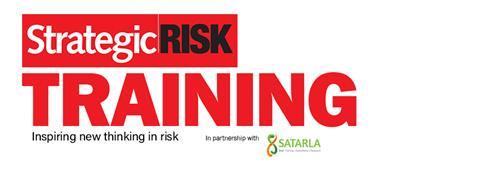Risk terminology can get in the way of risk management, says Sarah Gordon.
Almost every organisation that I’ve worked with has a slightly different interpretation of what they mean by risk appetite and risk tolerance states Sarah Gordon. This can therefore cause huge confusion, especially when individuals move between organisations.

In fact, one organisation I work with doesn’t talk about risk appetite, they only talk about risk tolerance. But what they mean by risk tolerance is the international definition of risk appetite, so there’s a huge amount of confusion.
The point is that risk terminology can get in the way of risk management. So sometimes it’s worth looking within the organisation and asking: “do we need to use the word risk appetite and tolerance, or do we already have our own language that provides us with that”.
If you already have language entrenched in your organisation that already means risk appetite and risk tolerance, (e.g. trigger points) then just use that. You don’t need to superimpose risk terminology because it’s just extra stuff for people to remember.
And the terminology is largely irrelevant. The most important thing is understanding what the edge of your tolerance zone is – so how much risk is too much risk?

Using risk management to influence decisions
Sarah Gordon will be leading a training session on influencing decision-making
The standard approach to risk management has evolved in recent years, with the use of modern computing power to help us challenge our human-based assumptions, together with concepts such as risk appetite and tolerance to help drive the risk culture we desire within our organisations.
This workshop explores the latest developments in key aspects of risk management required by a senior leader.
These include:
- · · · How to challenge your organisation’s risk profile: what should you expect from the risk committee meeting?
- · · · What is risk appetite and tolerance: how do you get it to be meaningful within your organisation?
- · · · Building a risk culture: how does this differ from an organisational culture?
- · · · Range of relevant case studies from sectors such as aerospace, construction, charities, governments, natural resources and finance.
Registration
WHEN: Wednesday 27 November, 9:00-17:00
WHERE: 52 Horseferry Rd, Westminster, London SW1P 2AF
Once you know that, you can get on with the businesses of working out what needs to be done when the business is approaching the edge of risk tolerance. That’s when you reach the risk management stage of actually doing something about risks.
Of course, it’s not always easy to ditch the jargon. If there is a piece of regulation that says ‘thou shalt have risk appetite statements’, as is the case in the world of finance, then you need to make sure that those processes are aiding risk management rather than becoming another piece of compliance.
Regardless of what terminology you’re using, you need to know what the trigger points are relative to the context in which you are operating and the objectives you are trying to achieve. Do you review these trigger points only once a year? Given the current level of uncertainty across many regions this probably isn’t good enough. You will have different risks changing at different rates and your level of tolerance for these risks will probably change with the changing context.
Too many organisations still see risk management as a tick box exercise being driven by regulation rather than what it should be, which is your tool to enable organisation-wide decision making in a world of uncertainty.
The training course explores the normal language that people are using to talk about risk and how to create dynamic risk tools to keep up with a changing world. Most importantly it helps you to identify your risk tolerances so you can get on with the real business of risk management.




















No comments yet